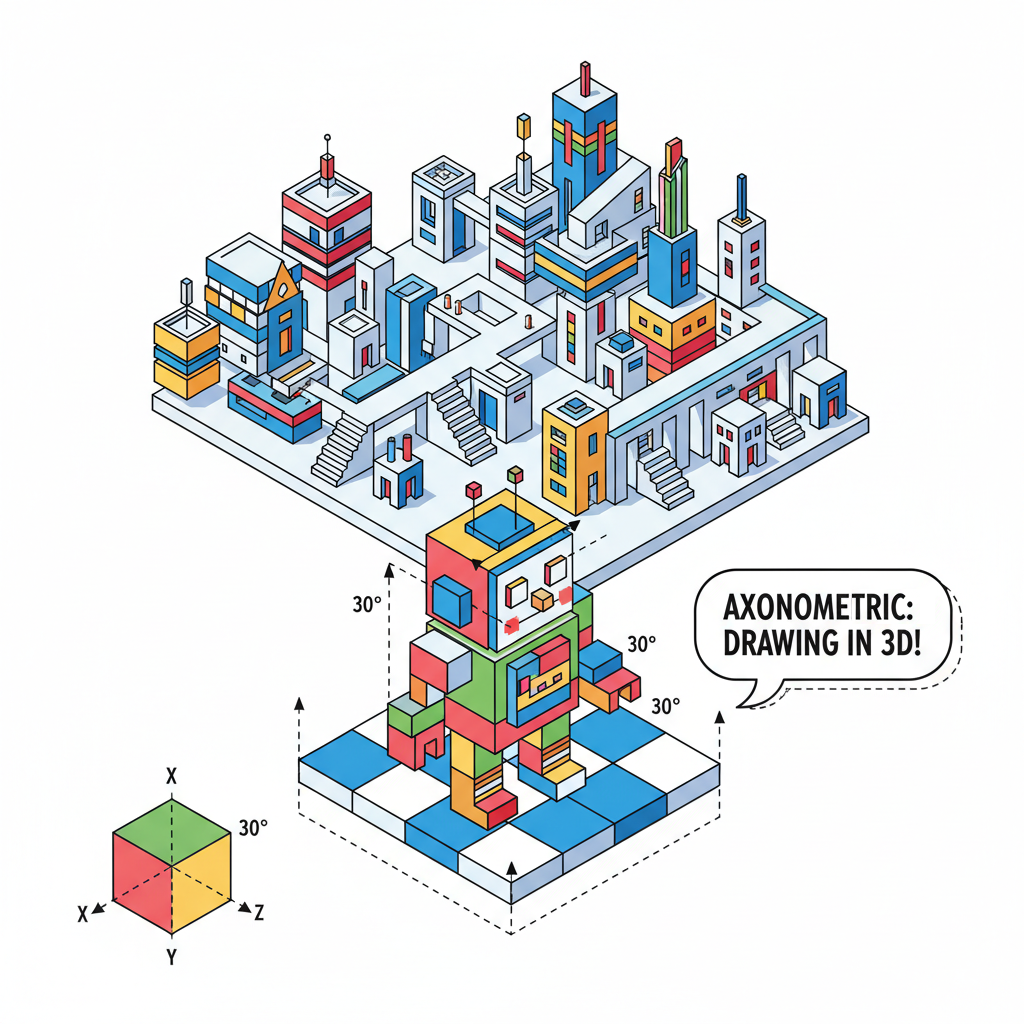Imagine you’re trying to draw a cool, blocky robot. How do you make it look like it’s really popping out of the page instead of being flat? That’s where axonometric drawings come in!
Axonometric is a fancy word for a type of drawing that makes 3D objects look 3D on a 2D piece of paper (or screen!). Think of it like a special superpower for artists and designers.
Here’s the basic idea:
- No Perspective: Unlike drawings that try to show things getting smaller as they get further away (like a road disappearing into the distance), axonometric drawings keep parallel lines parallel. This means all sides of an object that are the same length in real life will be drawn the same length on paper, no matter how far back they are. This can make objects look a bit “stretched” sometimes, but it’s super useful for showing exact measurements.
- Different Angles: There are a few different types of axonometric drawings (like isometric, dimetric, and trimetric), and they all just mean you’re looking at the object from a slightly different angle. The most common one you’ll probably see is isometric, where you look down on the object at an equal angle from three main directions.
Why is it cool?
- Clear and Detailed: Because everything stays to scale, axonometric drawings are great for showing exactly how something is built, like a building, a piece of furniture, or even a video game level. Architects and engineers use them all the time!
- Easy to Understand: Once you get the hang of it, these drawings make it easy to see all the important parts of an object at once.
- Video Games! Have you ever played a game where you look down on your character from a slight angle, and the world seems to pop out in 3D, but everything looks sort of “flat” in its own way? Many older (and some newer!) video games use an axonometric view because it was easier to create and still gave a great sense of depth.
So, next time you see a drawing that makes a flat image look like it has depth without things getting smaller in the distance, you’re probably looking at an axonometric drawing! It’s a clever way to bring the 3D world onto a 2D page.
